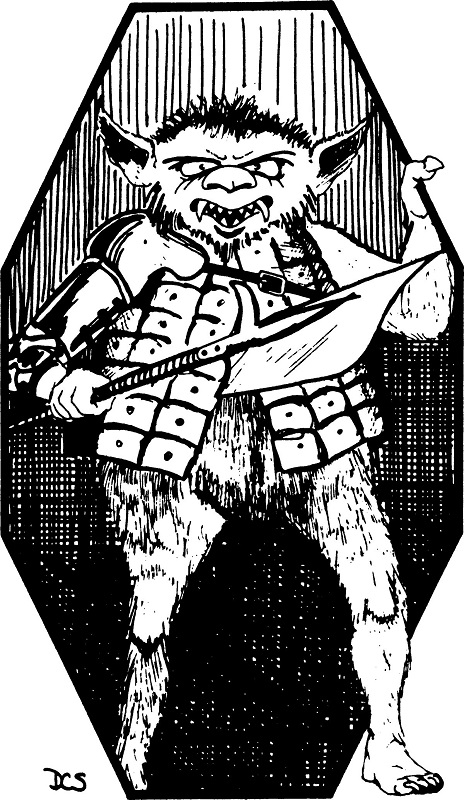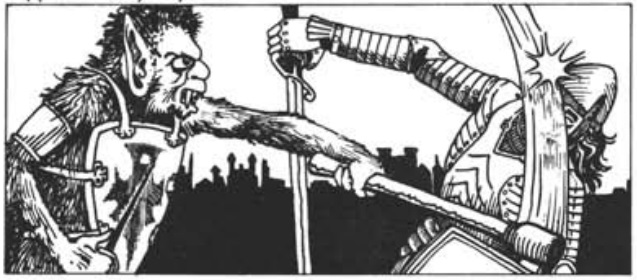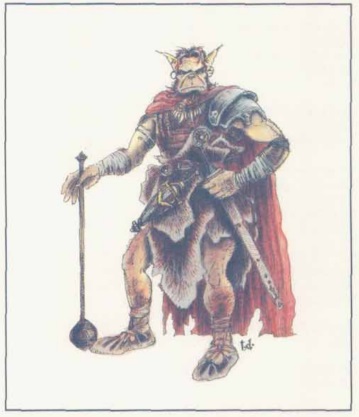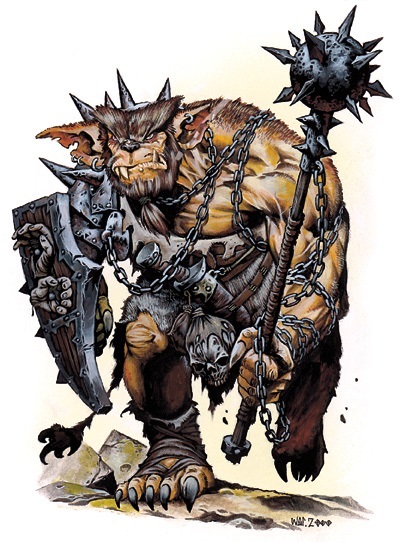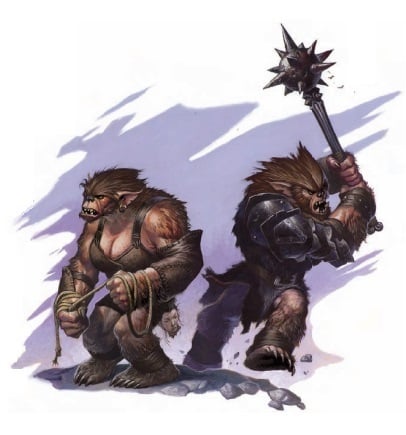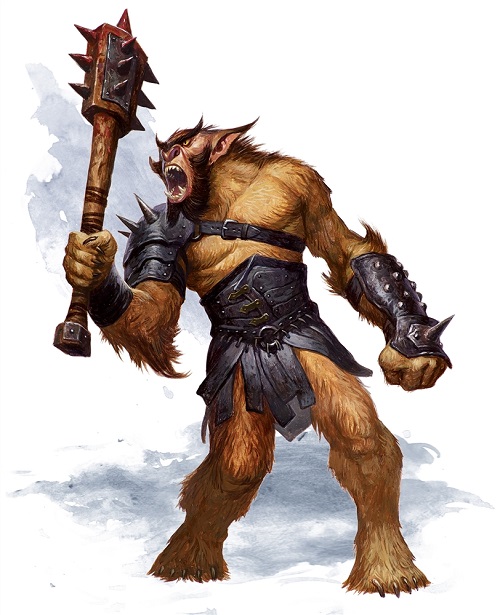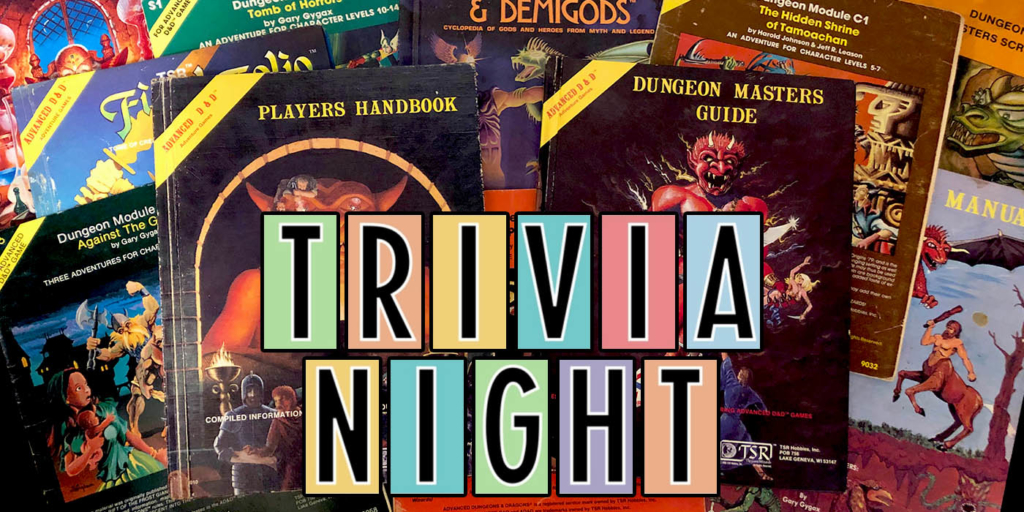D&D Monster Spotlight: Bugbears
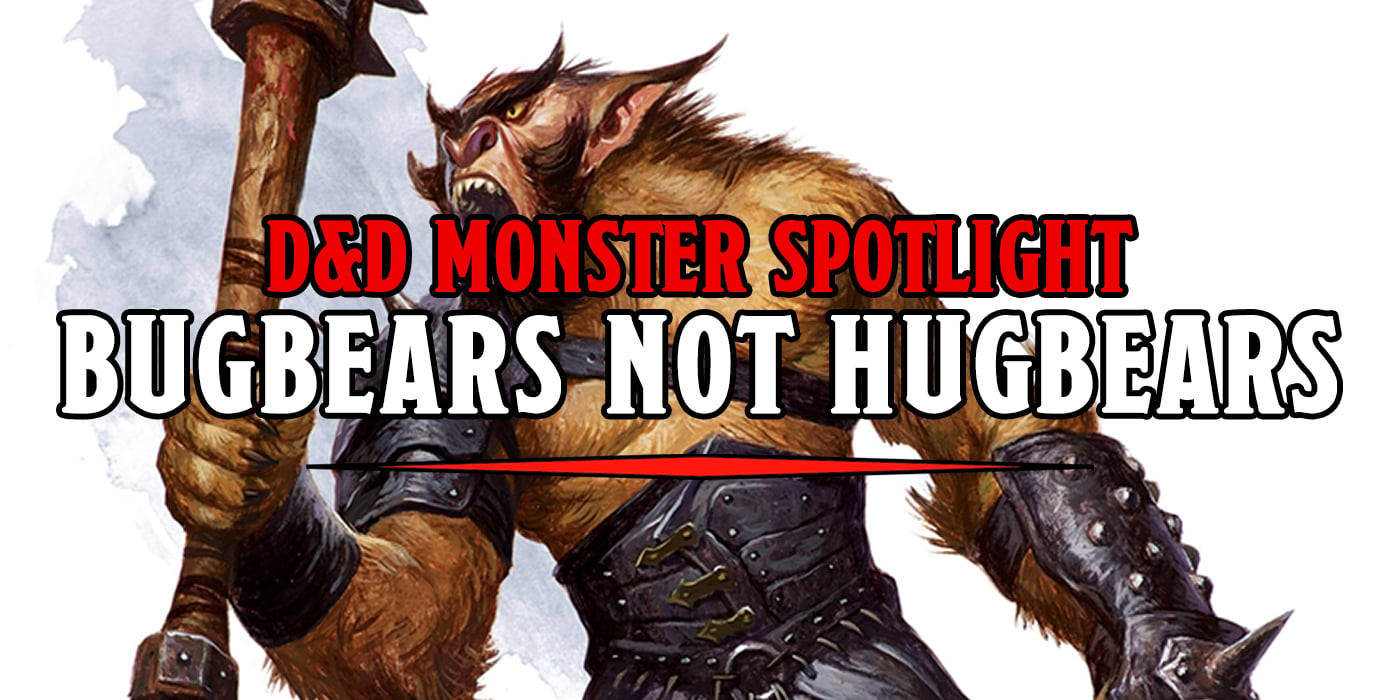

Neither bugs nor bears, these goblinoid monsters will beat you up, steal your lunch money, and probably eat you too. Just for the fun of it. It’s bugbears!
First Edition
While I usually picture bugbears as nothing to scoff at, I am having an impossible time taking them seriously based on this 1E art. They’re a good second or third encounter for new adventurers being not terribly strong but not pushovers. Bugbears are a great creature to throw at your players after they’ve gotten past the goblins, which is conveniently who the monster manual references as a bugbear cousin. Larger, harrier, and able to traverse dark areas as easily as bright sunlit ones, bugbears are the just a little more threatening and a little more likely to attack an adventurer regardless of where they are.
The first bugbear picture was so goofy that I included the second piece of art that the first edition monster manual posted as well. If my DM showed me this drawing I would laugh a little less compared to the first.
Second Edition
Bugbears get a little scarier this time around as their refined sense of smell and skill for hunting are described. While they aren’t in any way related to bears, they are about as tall as some species with thick hides, fur, long nails and facial features that are bear-like, hence their name. Bugbears are also intelligent and cunning enemies, attacking in group when they can, setting up ambushes when they attack in groups, and sending scouts to fetch reinforcement when they need. They have an advantage when trying to surprise an enemy and are especially effective in melee combat. Basically, bugbears have become very competent foes.
Third Edition
Third Edition dialed back a few of the key aspects of bugbears, noting how they prefer to live in underground caverns and failed to mention their equal ability to thrive in high or no light locations. I’m not sure if the intention was to transition bugbears into a more subterranean or low light encounters, but it differentiates them a little less from the other goblinoid creatures.
Fourth Edition
Finding bugbears in the 4E monster manual was a tiny bit of a trick. The internet told me that I had the correct book, but the index told me that no listing for bugbear existed. So I turned to the page for goblins thinking, “Maybe they’ve lumped all of the goblinoid creatures together, like dragons,” and low and behold: bugbears. Whereas third edition was trying to warm us up to the idea of bugbears basically just being the next evolution of goblins, fourth edition doesn’t even give them their own listing. Basically just the bigger, dumber guards of the more clever goblins, bugbears like to hunt, fight, and kill. They’re broken down into Bugbear Warrior and Bugbear Strangler, but this feels at the expense of any additional lore or flavor text.
Fifth Edition
At last, bugbears are the completely independent mean cousin of the goblin once more. Realistically, 5E doesn’t bring any new information to the bugbear page. They’re big mean abominable bear men who love to fight and enjoy treasure. They’re mediocre allies, willing to provide muscle for a price and only until they don’t want to anymore. Fifth edition does give us stats for the Bugbear Chief, who has been described in previous editions but never spelled out quite to concisely.
Have you encountered bugbears? Were they vicious brutes or an intelligent hunting force? Do you have a favorite bugbear memory? Let us know in the comments!
Happy Adventuring!

